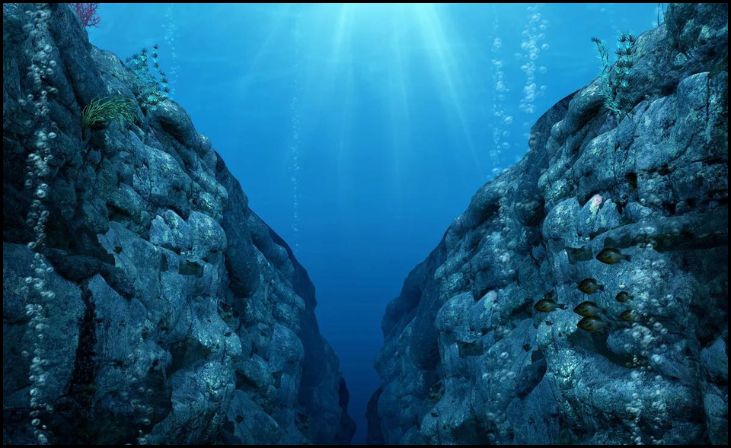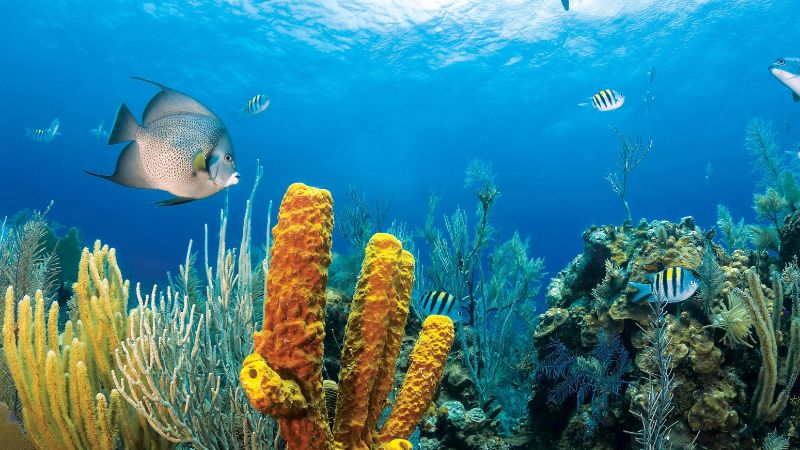The ocean is a vast, mysterious realm covering over 70% of the Earth’s surface. It is home to an incredible array of life forms and ecosystems, many of which remain largely unexplored and unknown to humans. The ocean not only plays a crucial role in regulating the planet’s climate but also serves as a vital source of food, transportation, and recreation. Its depths hold countless secrets, from ancient shipwrecks to undiscovered species. In this blog, we will delve into eight incredible facts about the ocean that highlight its importance, complexity, and the awe-inspiring phenomena that occur within its waters.
1. The Ocean Covers More Than 70% of the Earth’s Surface

The vast expanse of the ocean is truly astonishing, covering approximately 71% of the Earth’s surface. This immense body of water is divided into five major oceans: the Pacific, Atlantic, Indian, Southern, and Arctic Oceans. The Pacific Ocean alone accounts for more than one-third of the Earth’s surface area. The sheer size of the ocean influences weather patterns, climate, and even the distribution of life on our planet. It acts as a giant heat reservoir, absorbing and storing solar energy, which helps moderate temperatures and drive weather systems. The interconnected nature of the ocean’s currents plays a vital role in the global climate system, transporting heat and nutrients around the world.
2. The Ocean Contains 97% of the Earth’s Water
The ocean is the primary repository of the Earth’s water, holding about 97% of all the water on the planet. This vast amount of water is essential for sustaining life and maintaining ecological balance. The ocean’s saline waters are home to countless marine species, from microscopic plankton to the largest animals on Earth, such as blue whales. Despite its salinity, the ocean is a crucial component of the water cycle, as it contributes to the formation of clouds and precipitation through evaporation. Freshwater resources, such as rivers and lakes, ultimately depend on the ocean’s influence and the continuous exchange of water between different parts of the Earth.
3. The Ocean Is Home to the Tallest Mountain on Earth
When we think of the tallest mountain, Mount Everest typically comes to mind. However, the tallest mountain on Earth is actually Mauna Kea in Hawaii when measured from its base on the ocean floor to its summit. Mauna Kea stands at over 33,500 feet (10,210 meters) tall, significantly taller than Mount Everest’s 29,029 feet (8,848 meters). Most of Mauna Kea is submerged beneath the Pacific Ocean, with only about 13,796 feet (4,205 meters) rising above sea level. This underwater giant highlights the hidden topography of the ocean floor, which features mountains, valleys, and plains that are as varied and complex as any terrestrial landscape.
4. The Deepest Point on Earth Is in the Ocean

The Mariana Trench, located in the western Pacific Ocean, contains the deepest point on Earth, known as the Challenger Deep. This abyssal zone reaches a staggering depth of approximately 36,070 feet (10,994 meters). To put this in perspective, if Mount Everest were placed in the Challenger Deep, its peak would still be over a mile underwater. The extreme conditions of the Mariana Trench, with immense pressure, near-freezing temperatures, and complete darkness, create a unique and harsh environment. Despite these challenges, the trench is home to a variety of specially adapted organisms, including bacteria, crustaceans, and fish, that thrive in its depths.
5. The Ocean Produces Over Half of the World’s Oxygen
One of the most crucial contributions of the ocean to life on Earth is its role in producing oxygen. Phytoplankton, microscopic marine plants that float near the surface, perform photosynthesis, converting carbon dioxide into oxygen. It is estimated that these tiny organisms are responsible for producing over 50% of the world’s oxygen supply. This makes the ocean an indispensable player in maintaining the atmospheric balance that supports life on our planet. Additionally, phytoplankton form the base of the marine food web, supporting a vast array of marine life, from small fish to large whales, and playing a pivotal role in the global carbon cycle.
6. The Ocean Regulates the Earth’s Climate
The ocean acts as a major regulator of the Earth’s climate through its ability to absorb, store, and redistribute heat. Ocean currents, driven by wind, temperature, and salinity differences, circulate warm and cold water around the globe, influencing weather patterns and climate systems. For example, the Gulf Stream, a powerful warm ocean current, affects the climate of the eastern United States and Western Europe, making these regions warmer than they would be otherwise. The ocean’s capacity to absorb large amounts of carbon dioxide also helps mitigate the impact of human-induced climate change, although this process leads to ocean acidification, which poses a threat to marine ecosystems.
7. The Ocean Is Home to the Largest Living Structure on Earth
The Great Barrier Reef, located off the coast of Australia, is the largest living structure on Earth. Stretching over 1,400 miles (2,300 kilometers) and covering an area of approximately 134,000 square miles (344,400 square kilometers), it is composed of over 2,900 individual reefs and 900 islands. This magnificent structure is visible from space and serves as a habitat for an incredible diversity of marine life, including over 1,500 species of fish, 400 types of coral, and numerous other organisms. The Great Barrier Reef is not only a natural wonder but also a crucial ecosystem that supports biodiversity, tourism, and the livelihoods of many people.
8. The Ocean Contains Vast Untapped Resources

The ocean is a treasure trove of resources, many of which remain untapped and hold significant potential for future exploration and utilization. These resources include minerals, such as manganese nodules, cobalt-rich crusts, and rare earth elements, which are essential for modern technology and industry. Additionally, the ocean is a source of renewable energy, with technologies being developed to harness wave, tidal, and offshore wind energy. Marine biotechnology is another promising field, exploring the potential of marine organisms for pharmaceuticals, biofuels, and other applications. However, it is crucial to approach the exploitation of these resources sustainably to avoid damaging marine ecosystems and depleting valuable resources.
Conclusion
The ocean is a magnificent and vital part of our planet, playing a crucial role in supporting life, regulating climate, and providing resources. Its vastness and depth hold countless wonders and mysteries, from the tallest mountains and deepest trenches to the production of oxygen and the regulation of global temperatures. The ocean’s immense biodiversity and untapped resources offer incredible potential for scientific discovery and sustainable development. As we continue to explore and understand this remarkable realm, it is essential to recognize its importance and work towards preserving its health for future generations. The ocean’s boundless beauty and significance remind us of the interconnectedness of all life on Earth and the need to protect our planet’s most precious resource.

